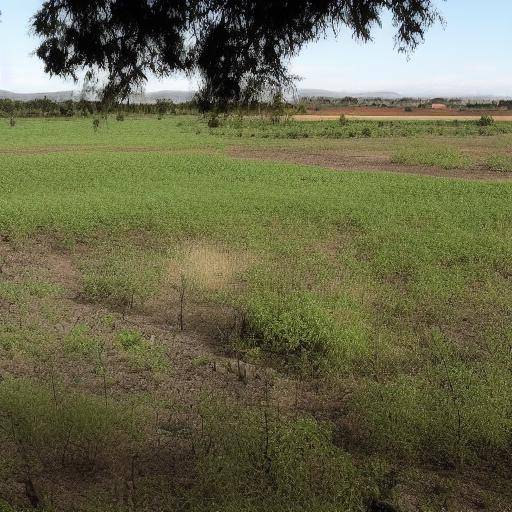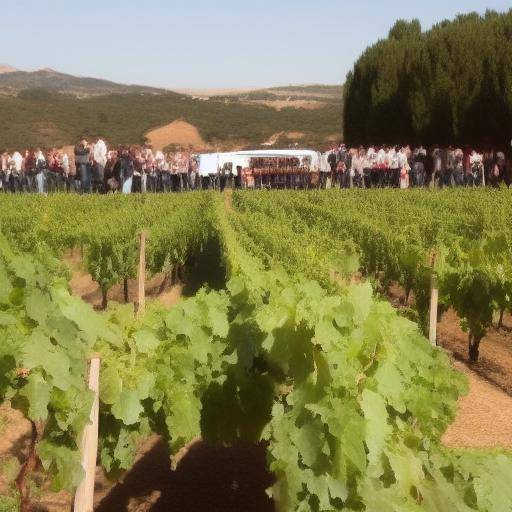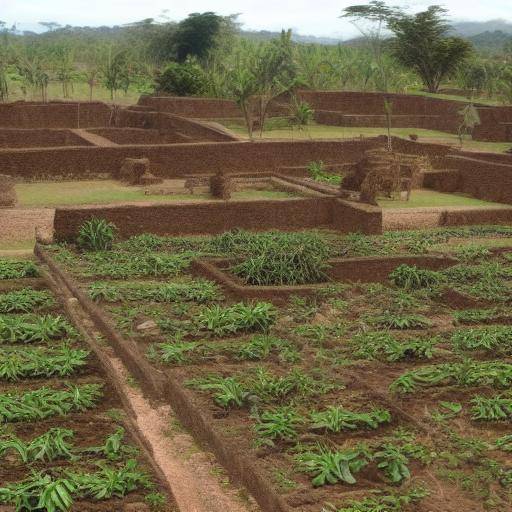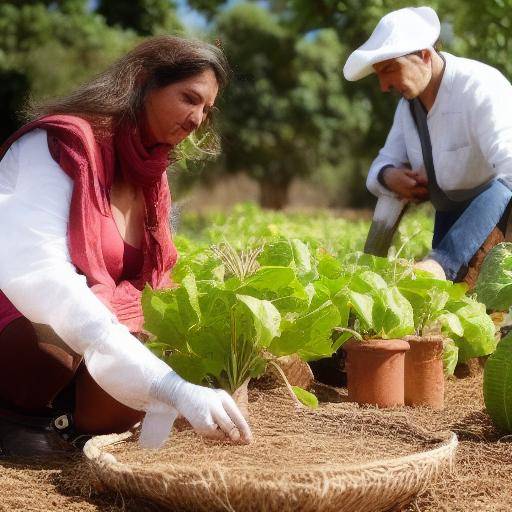
In the fields of cultivation in Eastern Europe, for centuries the peasants have shared stories about a mythological being that wanders between the crops. It awakens a feeling of reverence and fear of equal parts. This being is known as the Polevik. In this article, we will thoroughly explore the fascinating legend of Polevik, its relation to agriculture and harvest, as well as its importance in popular culture. In addition, we will analyze your influence on contemporary and future trends. Get ready to dive into the Polevik world!
History and Origins of Polevik
The history of Polevik dates back to ancient times in Eastern Europe, specifically in the agricultural regions of Ukraine, Belarus and Russia. According to popular belief, Polevik is a guardian spirit of the crop fields that appears mainly during twilight and dawn. He is often described as a tall, thin man, with penetrating eyes and peasant clothes. According to tradition, if a peasant crosses his way or if he is not shown due respect, the Polevik can bring bad luck to the harvest.
The worship of Polevik is deeply rooted in peasant culture, and over the centuries, it has become an emblematic figure that represents both fear and respect for the nature and work of the earth. This connection between folklore and agriculture reflects the vital importance that the land and its fruits have in the lives of rural communities.
Detailed analysis
The influence of Polevik on the cosmovision of rural communities is remarkable. Throughout history, the representations of Polevik in art, literature and music have served as a means to convey teachings on the importance of harmony with nature and respect for the earth. The Polevik figure is a manifestation of the close relationship between human beings and their natural environment, emphasizing the need to care for and protect natural resources to ensure the prosperity of future generations.
The Polevik Relationship with Agriculture and Harvest
The presence of Polevik in peasant traditions is closely linked to the cycle of agricultural life. Their appearance and behavior are interpreted as auguries of the success or failure of the next harvest. Thus, the peasants have weaved a complex network of rituals and offerings aimed at applauding the Polevik and ensuring their favor to ensure an abundant and prosperous harvest.
Polevik is considered a protector of crops, but he is also attributed the power to punish negligence and lack of respect for nature. This duality in its role reflects the vision of agriculture as a symbiotic relationship between man and earth, in which care, patience and respect are fundamental to ensuring the fertility of the earth and the abundance of crops.
Practical Tips and Utile Tips
- Keeping an attitude of respect and gratitude towards nature is fundamental to ensuring a successful harvest.
- Make symbolic offerings to the Polevik, such as leaving a portion of the harvest as a sign of gratitude and recognition of its protection.
Contemporary Influence and Futures Trends
The myth of Polevik continues to exert a significant influence on the popular culture of Eastern Europe. Although agricultural practices have evolved over time and have adopted modern technologies, spiritual connection with land and respect for the natural environment remain central to the mentality of rural communities.
Conclusion
In short, the Polevik figure transcends mere superstition and becomes a symbol of the deep connection between humanity and nature. The Polevik legend invites us to reflect on the importance of preserving our natural environment and adopting sustainable agricultural practices that guarantee the prosperity of future generations.
In conclusion, the Polevik represents the ancestral veneration of land and nature, as well as the importance of maintaining a harmonious relationship with the environment to ensure the livelihood of life. His legacy persists in popular culture and his teachings remain relevant today.
Frequently asked questions
What does the Polevik legend have in the popular culture of Eastern Europe?
The Polevik legend reflects the importance of land and agriculture in rural communities, as well as the need to respect and care for the natural environment to ensure prosperity. Their presence in popular culture is a reminder of the close connection between human beings and nature.
How does the myth of Polevik influence contemporary agricultural practices?
Although modern agricultural practices have adopted advanced technologies, the influence of the Polevik myth persists in the mentality of rural communities. Respect for land and the natural environment remains a central value, reflecting the interest in adopting sustainable agricultural practices.
What rituals or practices are performed to placate the Polevik and ensure a good harvest?
The peasants usually make symbolic offerings to the Polevik, such as leaving a portion of the harvest as a sign of gratitude and recognition of their protection. These rituals reflect the importance of maintaining an attitude of respect and gratitude towards nature.
What is the role of Polevik in the Eastern European agricultural tradition?
Polevik is considered a protector of crops, but he is also attributed the power to punish negligence and lack of respect for nature. Its role emphasizes the importance of caring for and protecting natural resources to ensure the fertility of the land and the abundance of crops.
What is the connection between folklore and agriculture in the history of Polevik?
The connection between folklore and agriculture is manifested through the myth of Polevik, which has served as a means of transmitting teachings on the importance of harmony with nature and respect for the earth. The Polevik figure represents the close relationship between the human being and his natural environment.
What lessons can we learn from the Polevik myth regarding sustainable agriculture?
The Polevik myth reminds us of the importance of maintaining an attitude of respect and gratitude towards nature, as well as the need to adopt sustainable agricultural practices that preserve the balance and fertility of the earth. His legacy invites us to reflect on the importance of protecting the environment to ensure the livelihood of life.
With this deep exploration of the Polevik legend, its relation to agriculture and harvest, as well as its influence on popular culture, we hope to have provided an integral and enriching view of this fascinating aspect of Eastern European tradition. The history of Polevik remains a lasting reminder of the importance of cultivating a harmonious relationship with nature in order to ensure the prosperity and livelihood of future generations.





